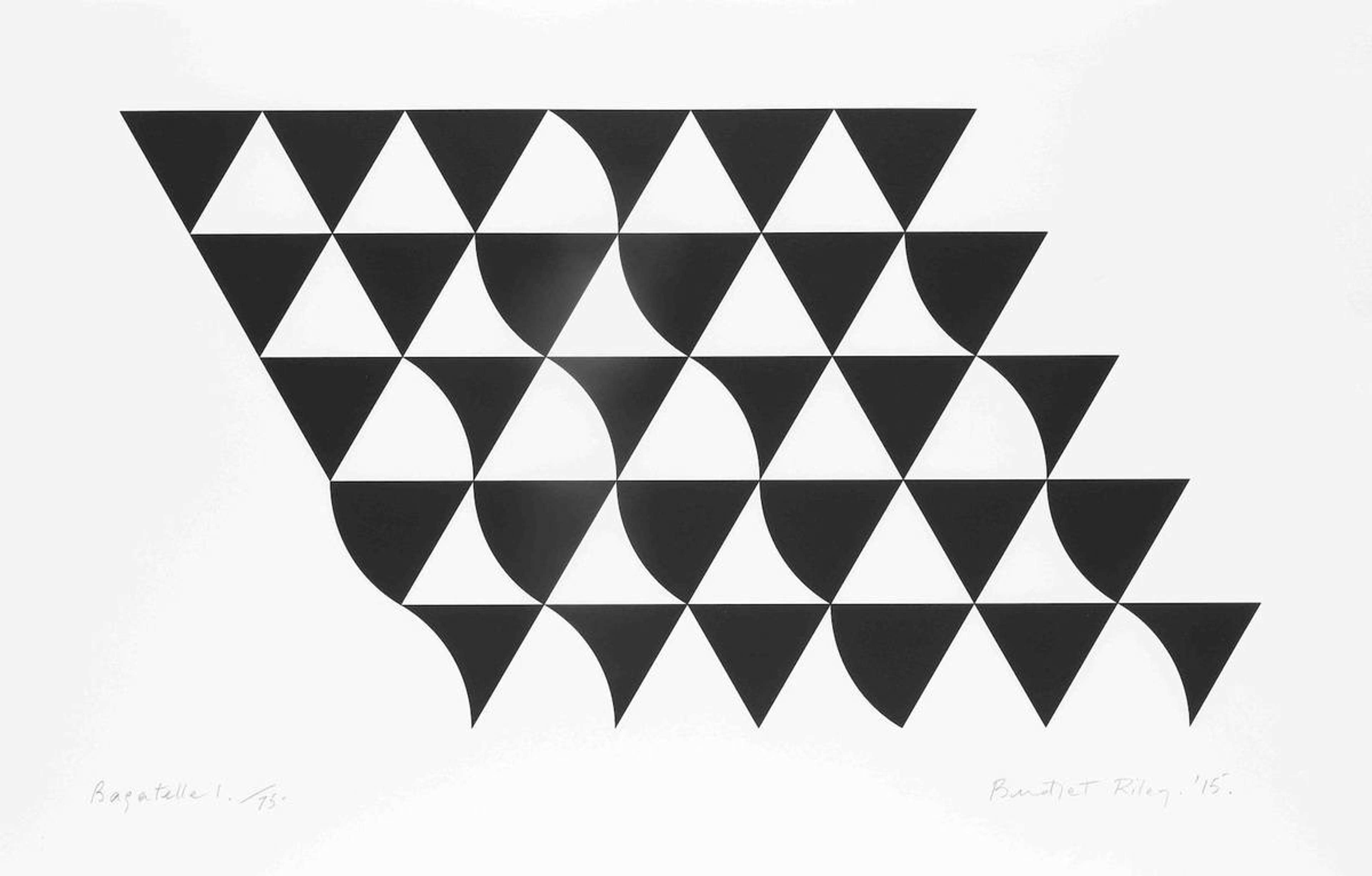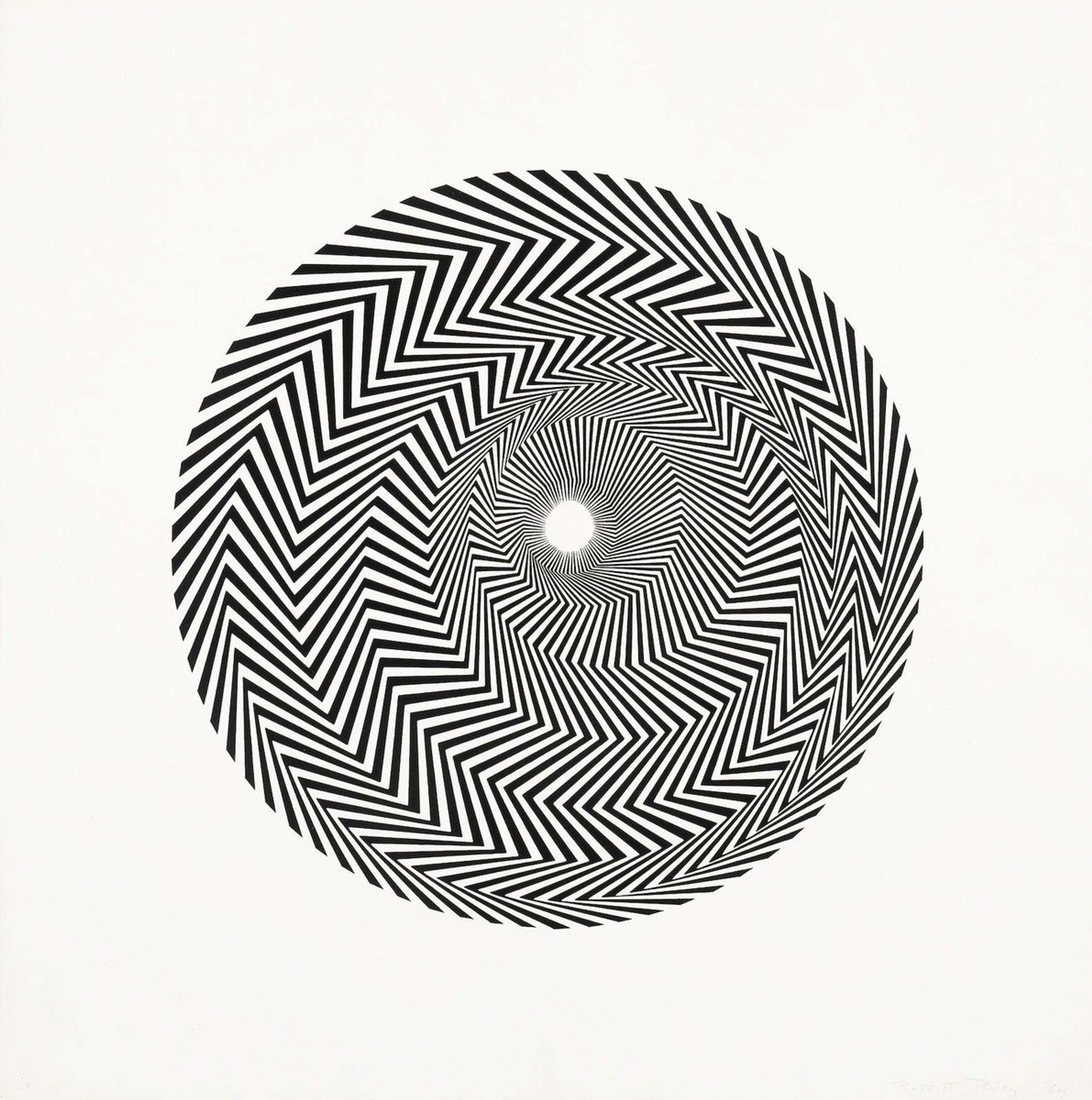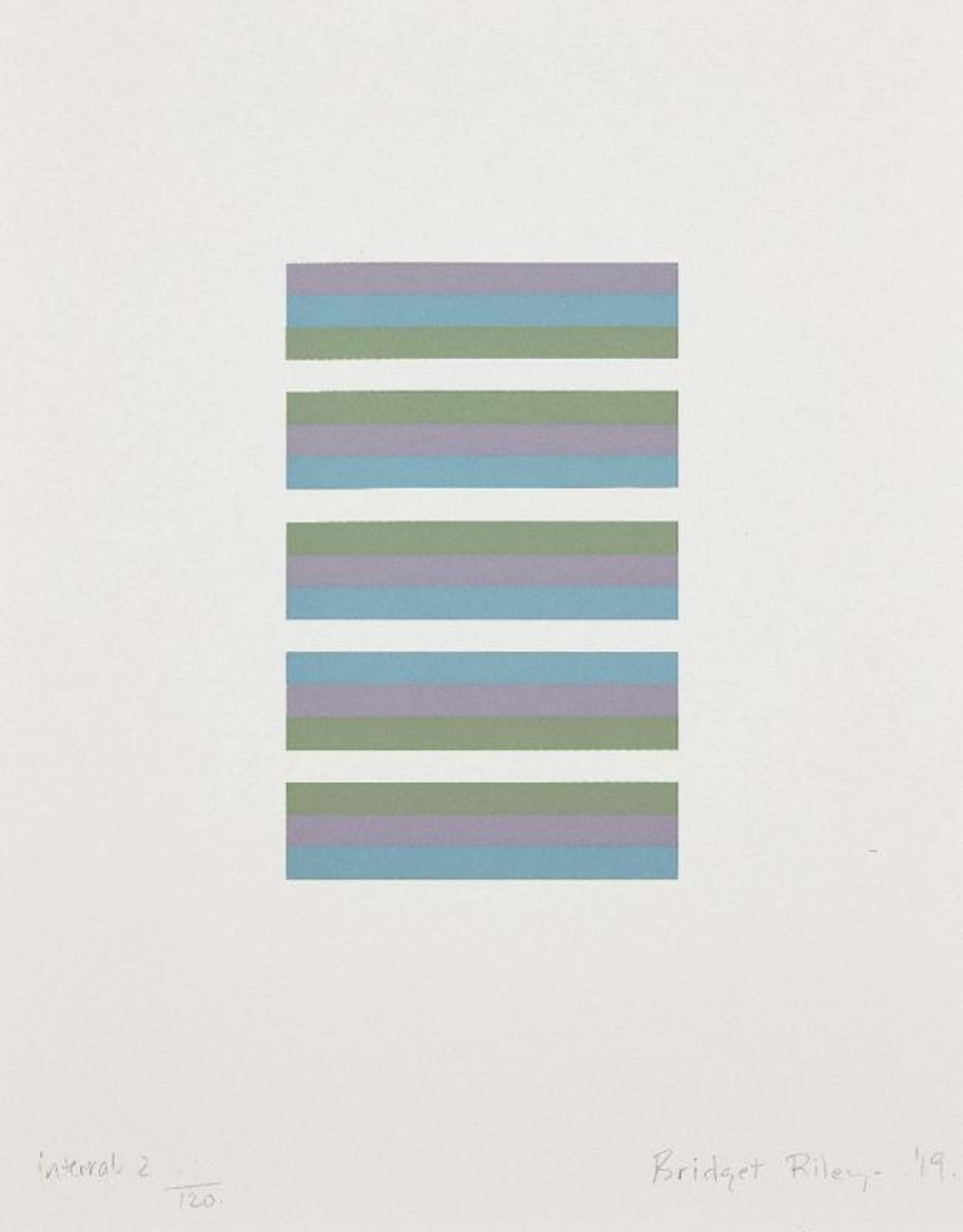 Bagatelle 2 © Bridget Riley 2015
Bagatelle 2 © Bridget Riley 2015
Bridget Riley
111 works
The Bagatelle print series was created by Bridget Riley in 1989. It is an example of her exploration of colour and form and represents her Op Art style.
This series is indicative of the period that Riley came of age
 Bagatelle 3 by Bridget Riley, 2015
Bagatelle 3 by Bridget Riley, 2015Visually, this series relates to many concerns of the period in which Riley came of age: challenging the mind-body duality leading Aldous Huxley to experiment with hallucinogenic drugs; fears regarding the loss of genuine individual experience; concerns about the future and threat of nuclear war amidst the Cold War; and a perceived need for audience participation.
Riley was inspired by the Italian Futurists
 Bagatelle 2 by Bridget Riley, 2015
Bagatelle 2 by Bridget Riley, 2015Exemplary of Riley’s non-representational approach to painting, motivated by the work of the Italian Futurists, the Bagatelle series depicts hard-edged forms rendered in Riley’s distinct monochrome.
This series references a French billiards game
 Bagatelle 1 by Bridget Riley, 2015
Bagatelle 1 by Bridget Riley, 2015The shapes in this series subtly move and shift as the viewer’s eyes skirt across, referencing the erratic, user-generated motions of the French billiards game, bagatelle.
Riley was influenced by the painter Victor Varsarley
 Fragment 4 by Bridget Riley, 1965
Fragment 4 by Bridget Riley, 1965The paintings of Victor Varsarley were of great influence to Riley, who had used designs of black and white lines since the 1930s.
The Cornish seas were also a key inspiration for Riley's work
 Coloured Greys 2 by Bridget Riley, 1972
Coloured Greys 2 by Bridget Riley, 1972Riley’s childhood spent in Cornwall, escaping war-torn London, also had an impact on her work. Riley confesses that the ever-changing Cornish seas and skies stimulated her vision.
Riley creates a new way of seeing in these works
 Coloured Greys 2 by Bridget Riley, 1972
Coloured Greys 2 by Bridget Riley, 1972Riley's optically stimulating works can be read as an attempt to recreate the wonder of seeing, which could not be effectively captured by a representational image.
Abstraction creates meaning in these works for Riley
 Untitled (Based on Blaze) by Bridget Riley, 1965
Untitled (Based on Blaze) by Bridget Riley, 1965Exploring the interplay of shape, line and light, Riley embraced abstraction as a conduit to discover meaning in her work.
Riley began her first Op Art paintings whilst teaching
 Untitled (Based On Movement In Squares) by Bridget Riley, 1962
Untitled (Based On Movement In Squares) by Bridget Riley, 1962Whilst undertaking a part-time teaching post at Hornsey College of Art from 1960-61 Riley began her first Op Art paintings.
Riley explores geometry in these works
 Intervals II by Bridget Riley, 2019
Intervals II by Bridget Riley, 2019Working in simple geometrical forms, Riley confesses: “I started studying squares, rectangles, triangles and the sensations they gave rise to. […] The marks on the canvas are the sole and essential agents in a series of relationships which form the structure of painting."
Riley's works form relational encounters with the viewer
 Nineteen Greys B by Bridget Riley, 1968
Nineteen Greys B by Bridget Riley, 1968Impersonal, and obviously unrelated to the world, Op Art is based on geometric abstraction. However, there is still meaning embedded within this: the work is never intended to be an end in itself, but a medium through which each viewer has a subjective experience, influenced by their own understandings.
